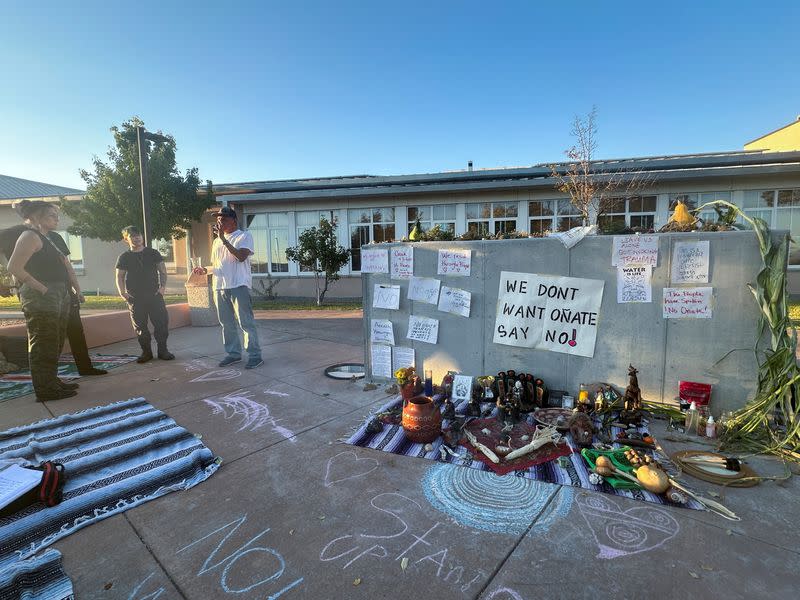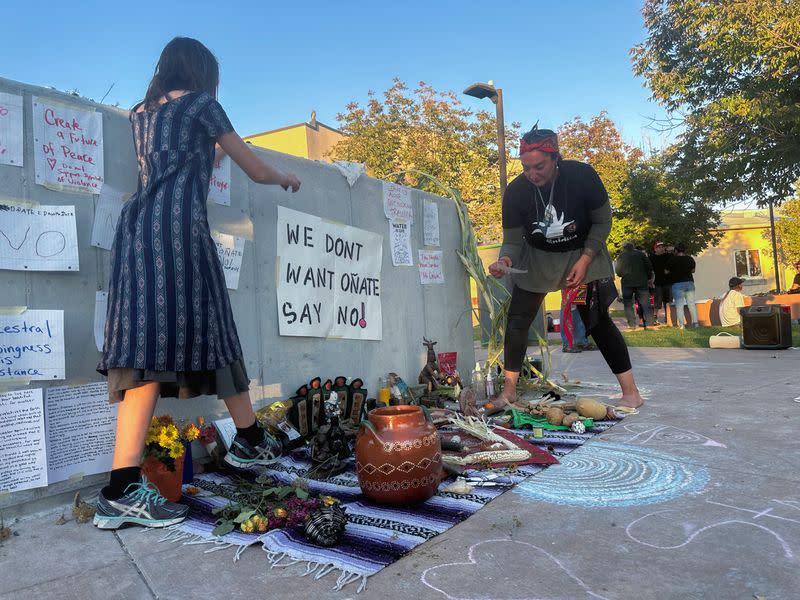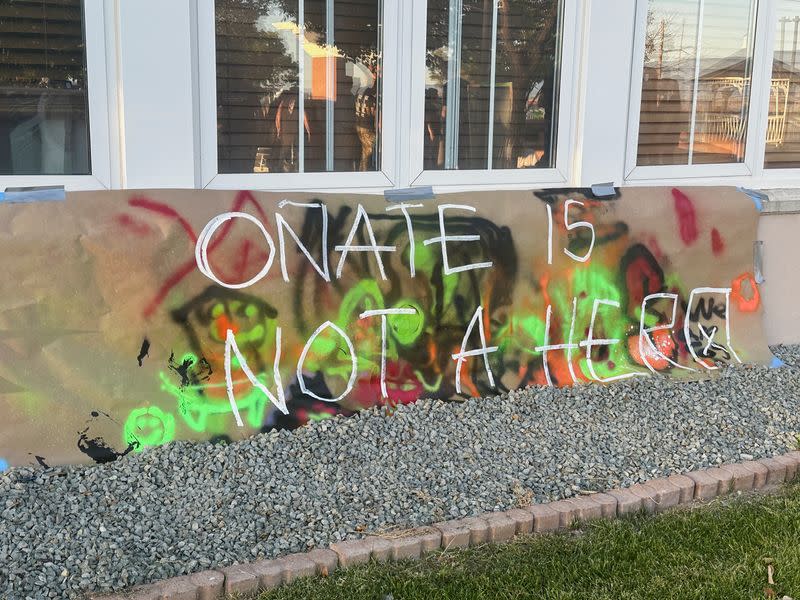New Mexico conquistador statue reinstallation stopped after protests
- Oops!Something went wrong.Please try again later.
By Andrew Hay
ESPANOLA, New Mexico (Reuters) - A New Mexico county halted the reinstallation of a 16th-century Spanish conquistador statue on Wednesday after protests over the return of the bronze figure, removed three years ago during nationwide anti-racism demonstrations.
The northern county of Rio Arriba postponed a Thursday reinstatement ceremony after activists occupied a concrete pedestal in the city of Espanola, where the statue of Juan de Onate was set to be placed.
The event is postponed until further notice "in the interest of public safety," the county said in a statement.
Dozens of monuments to European colonizers and Confederate generals came down in 2020 during racial justice protests. The unusual move to reinstate the Onate statue drew outrage from Native Americans and others who regard him as a war criminal for ordering the massacre of Indigenous people.
"We plan to keep fighting to make sure this symbol of murder, this symbol of slavery does not go up," said Celina Montoya Garcia, a member of the nearby Native American Ohkay Owingeh Pueblo community and a coordinator for the Coalition to Stop Violence Against Native Women.
County Commission Chairman Alex Naranjo and other local officials backed reinstatement of the statue to celebrate Hispanic heritage in a county where 71% of people are Hispanic, 20% Native American and many descended from both races.
"It's important to recognize that Don Juan de Onate led many of our families here to this valley," said Espanola Mayor John Ramon Vigil, who supports displaying the statue.
First erected in 1994 in Alcalde just north of Espanola, the statue has long outraged those who trace Onate’s brutal 1598 colonization of New Mexico to contemporary problems ranging from gender inequality to institutional racism.
One of the statue's feet was sawn off in 1997 by a protester to symbolize the two dozen Acoma Pueblo Native men who each had one foot amputated at the order of Onate after a battle where hundreds were killed and survivors enslaved.
(Reporting By Andrew Hay; Editing by William Mallard)



